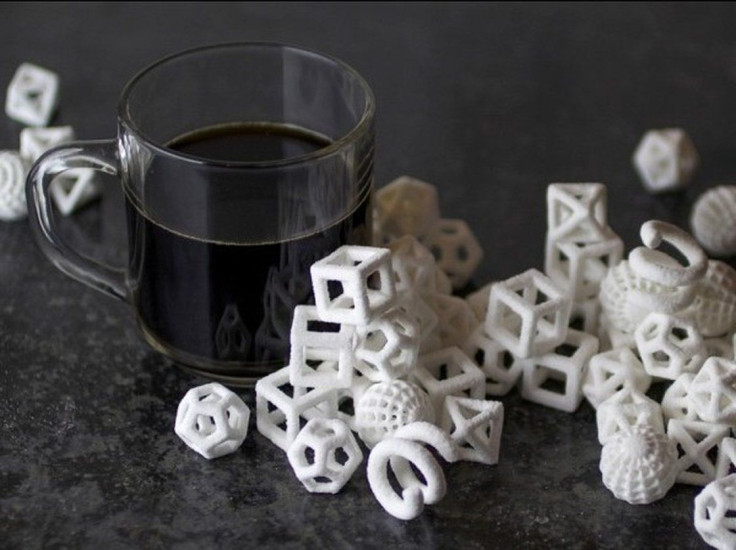3D Food Printers Promise Innovation, But Will The Appliances Really Be Useful?

At first thought, a 3D food printer almost sounds like a device that can print food out of thin air. But in reality, they’re far from that. As the companies behind the devices prepare to sell them later this year, it seems that they are only capable of reshaping and modifying food, which can be used to get children to eat healthier, but not for much else. Yet this is only the beginning of the revolutionary technology.
One of the printers, the ChefJet, was unveiled at the Consumer Electronics Show — CES 2014 — last week in Las Vegas. Manufactured by South Carolina-based 3D Systems, the restaurant-grade certified 3D printer can shape chocolate and sugar-based foods in ways that bakers and food decorators wouldn’t be able to. “What’s happening in this machine is, it’s basically spreading out a very fine layer of sugar, and it’s using an inkjet print head to paint on top of that sugar with water,” a spokeswoman told BBC News at CES. “That allows the sugar to recrystallize and harden into a 3D-printed object.”
3D Systems’ printers are certainly more practical for bakeries and other restaurants at the moment based only on their prices. Their ChefJet will run about $5,000 while their ChefJet Pro, which BBC News reported on, will run about $10,000. Another company, Barcelona-based Natural Machines, however, will be selling one of their machines for $1,300, and it’s a bit more useful for the average person — the price tag is another issue.
The Foodini is expected to launch later this year, and it was built to help at-home cooks skip the heavy lifting when it comes to cooking. Natural Machines designed its printer to take raw ingredients like dough, sauces, purees, and meat fillings, and shape them into items ready to be cooked, such as ravioli, breadsticks, and quiche. And while its uses span beyond sugar and chocolate, it’s still able to shape the food in “designer” shapes. “We recently made a ‘designer fish and chips’ with the Foodini,” said Lynette Kucsma, co-founder of Natural Machines, according to NPR. “We printed up mashed potatoes in the shape of a honeycomb and then filled each hole with fish of mashed peas.”
The Foodini’s ultimate purpose is to make home cooking faster while also more appealing to children, who might not be so inclined to eat healthier foods. Kucsma’s children are “suspicious of anything green on the plate,” she said, and they wouldn’t try her spinach quiche until she printed it into dinosaur shapes. “It was just making it fun for kids so they’d try new foods,” she said, according to NPR.
Considering that child obesity rates have almost tripled since 1980, according to the Centers for Disease Control and Prevention, using the Foodini to make food more interesting could be one way to get kids to eat healthier. However, it’s not economical, and there are many other creative solutions to instill healthy eating habits, including setting a good example, weaning them onto healthy foods, and offering them choices.



























